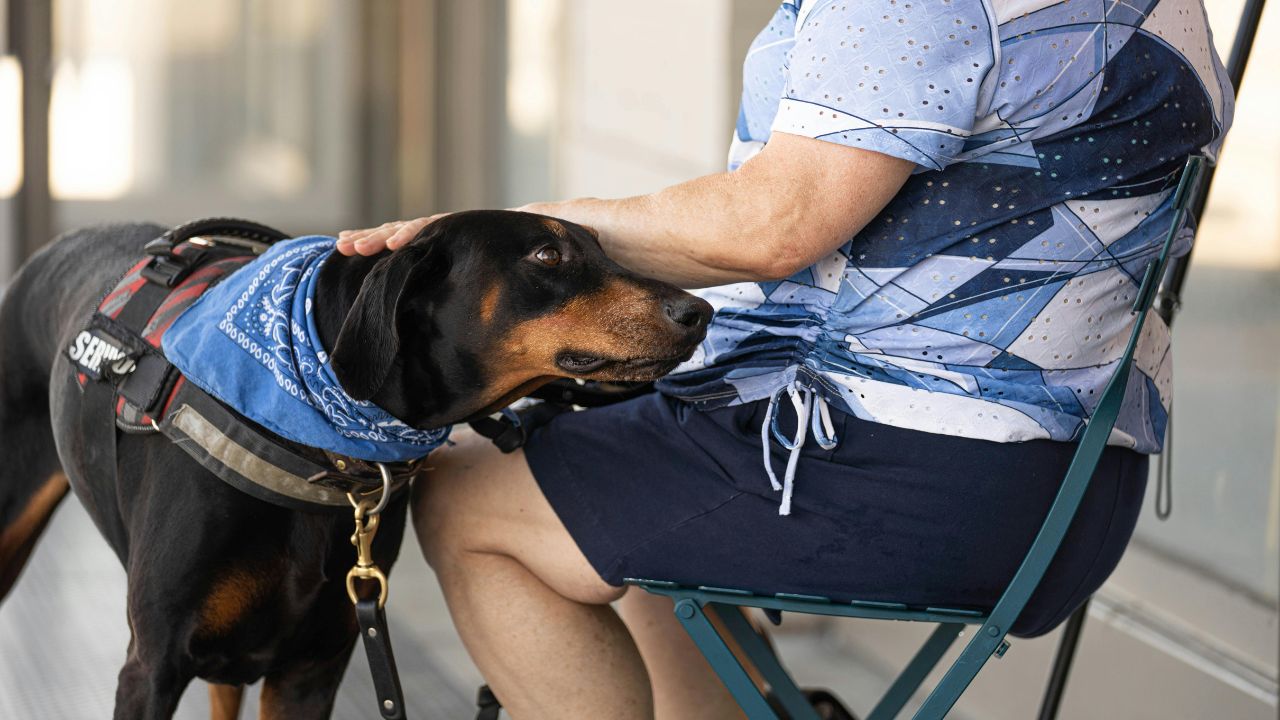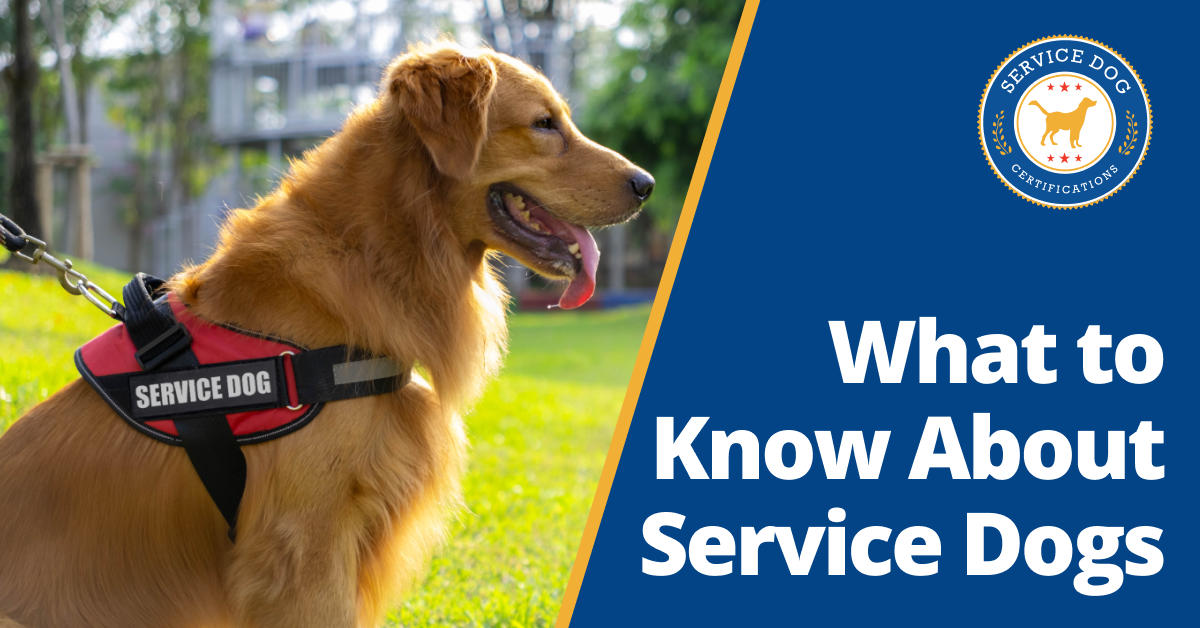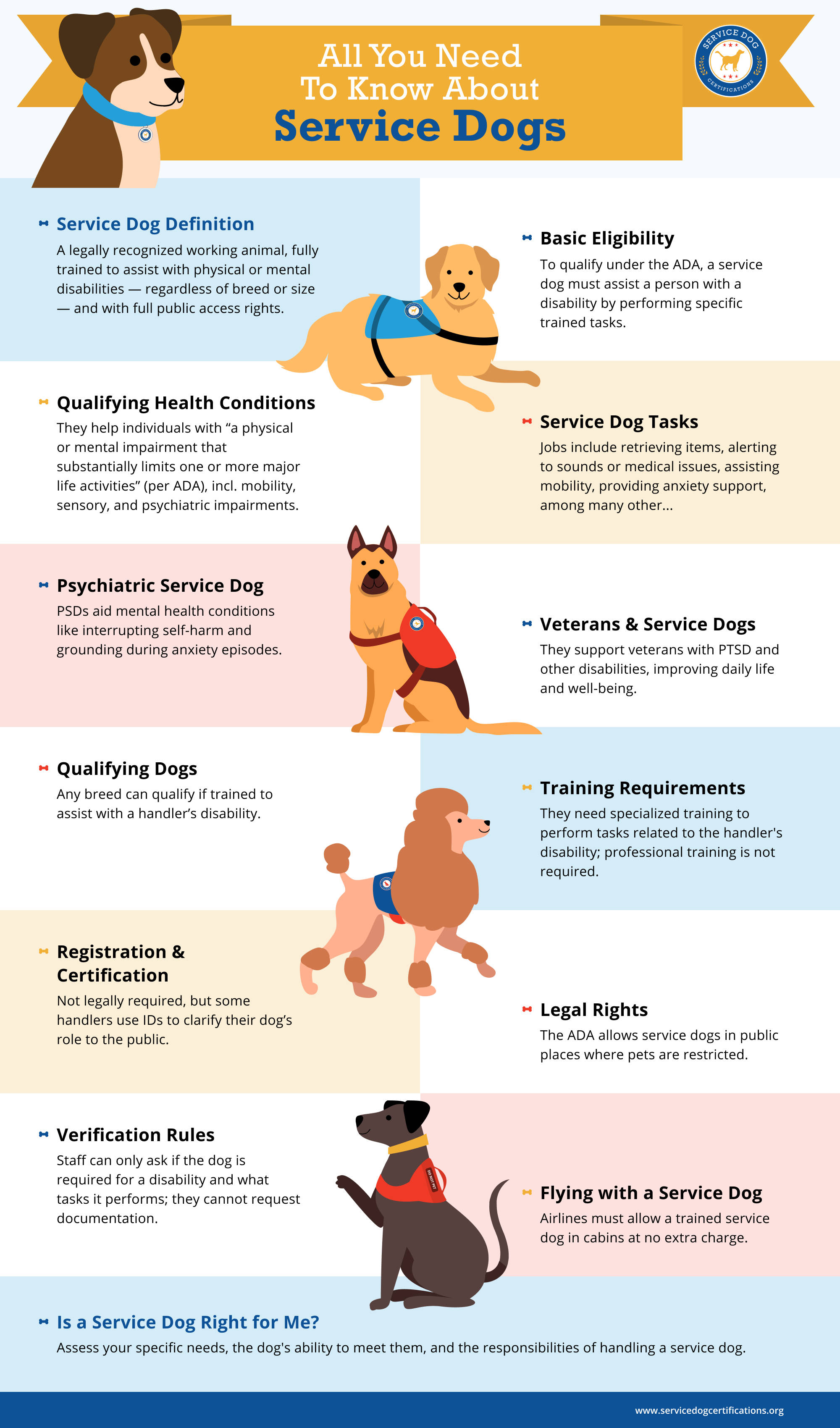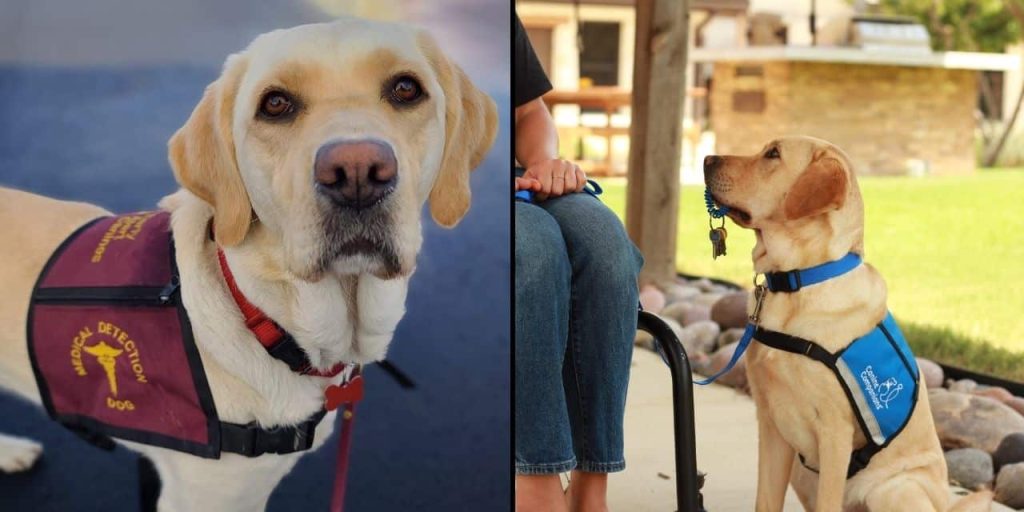If you live with diabetes, you know how challenging it can be to manage your condition every day. But what if you had a loyal companion by your side, someone who could alert you to dangerous blood sugar changes before they become emergencies?
A service dog trained specifically for diabetes can do just that. You might be wondering how to get one and what the process looks like. You’ll discover the key steps to finding and training a service dog that can help protect your health and give you peace of mind.
Keep reading to learn how to make this life-changing support a reality for you.
Benefits Of Diabetes Service Dogs
Diabetes service dogs offer many important benefits. They help people manage diabetes safely and with more confidence. These dogs provide support beyond what technology or medication can do alone. Their unique skills improve daily life for those living with diabetes.
Early Detection Of Blood Sugar Changes
Service dogs can sense changes in blood sugar levels before symptoms appear. They detect low or high glucose through scent. This early warning gives time to act quickly. It helps avoid dangerous situations like fainting or seizures. The dog’s alert reduces health risks and stress.
Emergency Response Assistance
Diabetes service dogs are trained to respond in emergencies. They can find help or press alert buttons. Some dogs bring medication like glucose tablets or insulin. They stay close and provide comfort during a crisis. Their presence can save lives by speeding up response time.
Improved Quality Of Life
Having a diabetes service dog offers more freedom and confidence. People feel safer going out alone or trying new activities. The dog’s companionship reduces anxiety about sudden health problems. It also encourages a more active lifestyle. Overall, these dogs help create a balanced and happier life.
Qualifying For A Diabetes Service Dog
Qualifying for a diabetes service dog involves a medical diagnosis and a doctor’s recommendation. Training focuses on detecting blood sugar changes to keep you safe. Service dogs must meet specific health and behavior standards before placement.
Qualifying for a diabetes service dog involves several steps. These dogs can help manage blood sugar levels. They alert their owners to changes. To qualify, specific criteria must be met. Understanding the process is crucial.Medical Criteria And Documentation
A medical diagnosis of diabetes is necessary. Not all diabetes types qualify. Type 1 diabetes often meets the criteria. Type 2 may qualify with severe complications. Proper documentation is essential. This includes medical records and a physician’s statement. The statement should outline the need for a service dog.Consulting Healthcare Professionals
Consulting a healthcare professional is vital. They assess whether a service dog is needed. They evaluate your diabetes management challenges. Discuss the potential benefits with them. Their support aids in the qualification process. Their input can strengthen your application.Legal Rights And Protections
Service dogs have legal protections. They are covered under the Americans with Disabilities Act (ADA). This law allows service dogs in public places. Understanding these rights is important. It ensures access to necessary environments. Misunderstanding these rights can lead to issues. Qualifying for a diabetes service dog requires understanding these steps. It’s a journey requiring patience and diligence. Each step brings you closer to managing diabetes more effectively.Types Of Diabetes Service Dogs
Understanding the different types of diabetes service dogs can help you decide which one fits your needs best. Each type plays a unique role in managing diabetes, offering support that goes beyond companionship. Knowing what each dog can do prepares you to make informed choices about your health and safety.
Alert Dogs
Alert dogs are trained to detect changes in your blood sugar levels, often before you notice symptoms yourself. They use their keen sense of smell to pick up chemical changes in your breath or sweat when your glucose levels drop or spike.
Imagine having a loyal friend who nudges you or barks gently as soon as your blood sugar is dangerously low. This early warning can prevent serious medical emergencies and give you peace of mind throughout the day.
Response Dogs
Response dogs do more than alert you; they take action when you’re in trouble. If you experience a severe hypoglycemic episode, these dogs are trained to fetch medication, call for help, or activate an emergency alert system.
Think about how empowering it feels to know your dog can assist you in critical moments, even if you can’t speak or move. This support can be a literal lifesaver during sudden medical crises.
Dual-purpose Dogs
Dual-purpose dogs combine the skills of alert and response dogs. They not only warn you about blood sugar changes but also help during emergencies by fetching supplies or seeking help.
Having a dual-purpose dog means fewer worries about what might happen if you face a medical emergency alone. These dogs provide comprehensive support tailored to your daily needs and unexpected situations.
Finding A Reputable Service Dog Provider
Finding a reputable service dog provider is essential for those needing a diabetes service dog. The right provider ensures the dog is well-trained to detect blood sugar changes. It also guarantees the dog will behave properly in public places. Choosing carefully can improve safety and quality of life.
Nonprofit Organizations
Many nonprofit groups specialize in training service dogs for diabetes. These organizations often have strict training standards. They match dogs carefully with their owners’ needs. Nonprofits usually offer support and follow-up services. They may also provide financial assistance or sliding scale fees.
Professional Training Programs
Professional programs use certified trainers with experience in diabetes alert dogs. These trainers focus on skills like scent detection and alert behaviors. Programs often include evaluation and customization for each client. Some offer in-person or virtual training sessions. Check if the program provides ongoing support after placement.
Cost Considerations
Costs vary widely between providers and programs. Nonprofit organizations might charge less or offer scholarships. Professional training programs can be expensive but provide specialized expertise. Consider expenses like veterinary care, equipment, and maintenance. Plan for long-term costs to keep the service dog healthy and effective.
Training Process For Diabetes Service Dogs
The training process for diabetes service dogs is both detailed and demanding, designed to prepare these incredible animals to support you in everyday life. It’s not just about teaching a dog to obey commands; it’s about equipping them with life-saving skills that can detect and respond to blood sugar changes. Understanding each training phase helps you appreciate the commitment behind every service dog’s readiness.
Basic Obedience Training
Every diabetes service dog starts with basic obedience training. This includes commands like sit, stay, come, and heel. These skills are essential because your dog needs to be well-behaved and responsive in public settings.
Trainers use positive reinforcement to encourage good behavior. Dogs learn to focus on their handler, which is crucial when they must alert you to a medical issue. Imagine trying to trust a dog that doesn’t listen—obedience lays the foundation for all other training.
Specialized Diabetes Alert Training
This stage is what makes the dog a true service animal. Dogs are trained to detect chemical changes in your body caused by blood sugar fluctuations. They learn to recognize both low and high blood sugar levels.
Training involves exposing the dog to sweat or breath samples from individuals experiencing hypoglycemia or hyperglycemia. The dog then learns to alert you through specific behaviors, like pawing or nudging. This skill can give you precious minutes to act before symptoms worsen.
Ongoing Skill Reinforcement
Once trained, the dog’s skills need regular reinforcement. Daily practice and occasional refresher sessions keep the alert behavior sharp. You’ll want to integrate these exercises into your routine so the dog remains focused and reliable.
Consider how quickly skills can fade without practice. Ongoing training also helps the dog adjust to new environments or changes in your condition. How will you make sure your service dog stays prepared for the unpredictable nature of diabetes?

Credit: en.clickpetroleoegas.com.br
Applying For A Diabetes Service Dog
Applying for a diabetes service dog involves several important steps. Each step ensures the dog meets your specific medical needs. The process can take time and requires patience. Understanding the details helps you prepare better.
Assessment And Evaluation
A medical evaluation is the first step. A healthcare professional confirms your diabetes condition and need for a service dog. They check how a service dog can assist with your daily life. This evaluation supports your application with official documentation.
Next, a service dog organization reviews your medical records. They assess your lifestyle and ability to care for a dog. This ensures the dog will provide real benefits and fit well into your routine.
Waiting Periods And Timelines
Wait times vary by organization. Some may have long waiting lists. It can take months or even years to receive a trained dog. Training a service dog is a detailed and lengthy process.
During the wait, stay in contact with the organization. Update them on any changes in your health or needs. This keeps your application active and accurate.
Funding And Financial Assistance
Service dogs can be costly. Expenses include training, veterinary care, and supplies. Many organizations offer financial aid or payment plans. Grants and charities may also provide support.
- Check with local diabetes foundations for funding options.
- Ask service dog groups about scholarships or grants.
- Consider fundraising or community support campaigns.
Planning finances early helps avoid surprises. Knowing your options makes the process smoother.
Living With A Diabetes Service Dog
Living with a diabetes service dog changes your daily life in many positive ways. This special companion does more than provide comfort—they actively help you manage your blood sugar levels and alert you to dangerous changes. However, having a service dog also means adapting your lifestyle to ensure both your needs and your dog’s wellbeing are met.
Daily Care And Maintenance
Your service dog needs consistent care to stay healthy and alert. This includes regular feeding, grooming, and exercise to keep their energy up and stress levels down.
Think about scheduling daily walks at the same times each day. This routine helps your dog stay focused and balanced. Also, keep their training sharp by practicing commands and alert behaviors regularly.
Don’t forget medical check-ups. Just like you, your dog needs vet visits to prevent health issues that could interfere with their service.
Integrating The Dog Into Your Routine
Adding a service dog to your life means adjusting your daily activities. You might find yourself waking up earlier to take your dog outside or planning outings around their needs.
Try to include your dog in your meal times, medication reminders, and glucose monitoring sessions. This not only helps your dog understand their role but also strengthens your bond.
Ask yourself: How can your dog’s alerts fit naturally into your schedule? Maybe setting alarms alongside your dog’s cues can boost your diabetes management.
Travel And Public Access Guidelines
Traveling with a diabetes service dog requires preparation, but it’s totally doable. Make sure you have all necessary documentation, such as identification cards and vaccination records.
Know the rules about service dogs in public places like restaurants, buses, and airports. Your dog has the right to accompany you, but being ready to explain their role can ease encounters.
Consider packing a travel kit with essentials like water, snacks, and a portable leash. Having these items handy keeps your dog comfortable and responsive during trips.

Credit: www.servicedogcertifications.org
Common Challenges And Solutions
Getting a service dog for diabetes can bring immense support, but it also comes with unique challenges. Understanding these common hurdles helps you prepare better and find effective solutions. Let’s look at some issues people face and how you can navigate them successfully.
Managing Allergies And Phobias
Allergies to dogs or fear of them can be major roadblocks. If you or someone close to you has a dog allergy, choosing hypoallergenic breeds like Poodles or Bichon Frises can reduce reactions.
Phobias are often overlooked. Introducing the service dog gradually and allowing controlled exposure can ease anxiety for those fearful of dogs.
- Test allergy reactions before committing.
- Use air purifiers and clean frequently to minimize allergens.
- Seek professional help if phobia is severe.
Behavioral Issues
Service dogs must stay calm and focused, but training isn’t always perfect. Behavioral problems like barking or distraction can arise, especially if the dog isn’t properly socialized.
Consistent training and reinforcement are key. Working with a certified trainer or organization ensures your dog meets the necessary standards and behaves reliably.
- Establish a daily routine for training and exercise.
- Address problem behaviors immediately to avoid escalation.
- Reward positive behavior to strengthen good habits.
Legal And Social Obstacles
Understanding your rights is crucial when using a service dog in public spaces. Unfortunately, some businesses and individuals may challenge your dog’s presence.
Carrying documentation and knowing ADA regulations empowers you to handle disputes confidently. Educating others respectfully can also reduce misunderstandings.
- Keep ID and medical proof handy but respect your own privacy.
- Practice clear communication about your dog’s role.
- Connect with advocacy groups for support and advice.
Have you ever faced skepticism about your service dog? How did you handle it? Sharing your experiences might help others prepare better.
Resources For Diabetes Service Dog Owners
Getting a service dog for diabetes is a life-changing step, but the journey doesn’t end once you have your dog. Accessing the right resources can make your partnership stronger and more effective. Whether you need emotional support, legal advice, or up-to-date information, these resources help you navigate challenges with confidence.
Support Groups And Communities
Connecting with others who have diabetes service dogs can give you valuable insights and encouragement. Online forums and local meetups offer spaces to share stories, tips, and challenges. You might find advice on training techniques or recommendations for trusted service dog trainers from people who’ve been in your shoes.
Have you checked out Facebook groups dedicated to diabetes service dog owners? Many members post about experiences with alert behaviors and managing public access rights. These communities can also help you avoid common pitfalls by learning from real-life examples.
Educational Materials
Understanding how to work with your service dog requires continuous learning. Look for guides and videos that focus on diabetes alert dogs, including how to recognize early signs and respond effectively. Some organizations provide downloadable manuals that explain the science behind diabetes detection dogs and training protocols.
For instance, the American Diabetes Association offers resources tailored to service dog owners. Keeping these materials handy can help you reinforce training and stay informed about new developments. Do you have a favorite resource that helped you understand your dog’s alerts better?
Advocacy And Legal Support
Knowing your rights is crucial when you’re out with your service dog. Legal support organizations can guide you through public access laws and help if you face discrimination. They often provide templates for letters and advice on what to do if someone questions your dog’s legitimacy.
Groups like the Diabetes Service Dog Association focus on advocacy and educating the public about service dogs. Being proactive about your legal rights ensures you and your dog can access places without unnecessary hassle. Have you ever had to advocate for your service dog in public? What helped you stay confident?

Credit: www.servicedogcertifications.org
Frequently Asked Questions
How Can I Qualify For A Diabetes Service Dog?
You must have a medical diagnosis of diabetes with frequent blood sugar issues. A healthcare provider’s recommendation is usually required. The dog must be trained to detect and alert low or high blood sugar levels.
What Training Do Diabetes Service Dogs Receive?
These dogs are trained to recognize changes in blood sugar through scent. They alert their handler before a dangerous episode occurs. They also learn to fetch medication or glucose sources during emergencies.
Where Can I Get A Certified Diabetes Service Dog?
Certified organizations specialize in training and providing diabetes service dogs. You can also train your own dog with professional guidance. Always ensure the dog meets ADA service dog standards.
How Much Does A Diabetes Service Dog Cost?
Prices vary widely, typically between $15,000 and $30,000. Costs include training, certification, and ongoing care. Some nonprofits offer financial aid or grants to help cover expenses.
Conclusion
Getting a service dog for diabetes takes time and effort. You must meet specific medical needs and work with trained professionals. These dogs can help detect blood sugar changes and keep you safe. Remember to find a trusted program and follow all steps carefully.
A service dog can offer real support and improve your daily life. Take each step one at a time. Your health and safety matter most.

Emily Barker is the founder of ChillDogLife.com, a space dedicated to helping pup parents discover the best dog products, lifestyle tips, and cozy ideas for happier homes.
A lifelong dog lover, Emily combines her passion for pets with a knack for research to share trusted recommendations on everything from toys and furniture to health and everyday care.
Her goal is simple: to make life easier, stylish, and more joyful for dogs and the people who love them.







